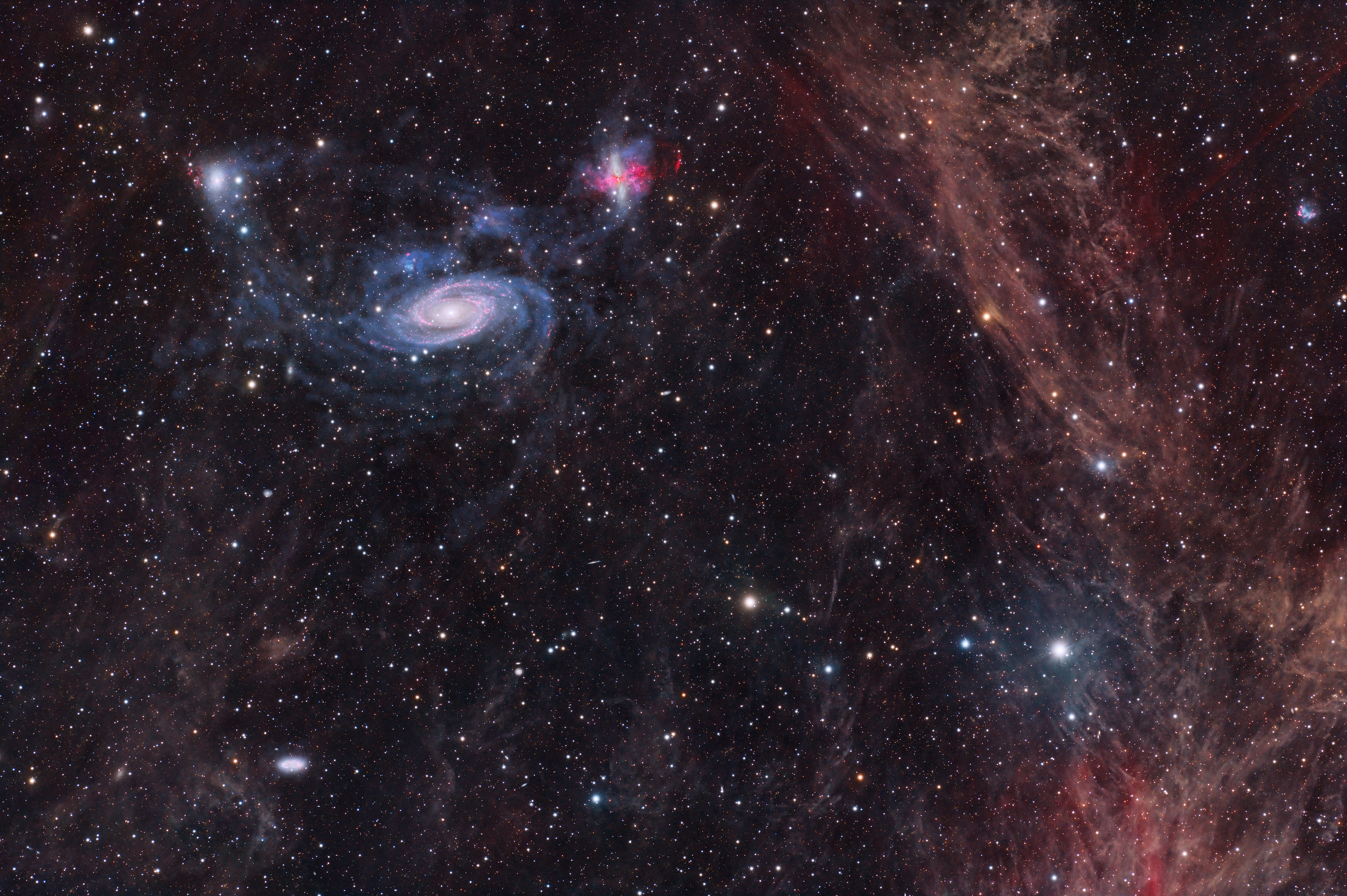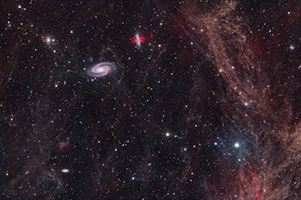
 |
M81 Galaxy Group, Neutral Hydrogen, and Interstellar Dust |
|||||||||||||||||||||||
About This PhotographThe M81 galaxy group, shown here on the left, is a collection of interacting galaxies in the constellations of Ursa Major and Camelopardalis, quite far north in the sky. M81 is the large spiral galaxy, and is flanked by M82 on the right and NGC 3077 on the left. Near the lower-left corner is a fourth member of this group, NGC 2976. The first three galaxies are strongly interacting. Their mutual gravity has stripped away large quantities of hydrogen gas, some of which now forms "bridges" between the galaxies, shown in this photograph in blue. This interaction likely heavily influences the spiral arm formation of M81, and the hydrogen falling into M82 and NGC 3077 has given rise to a burst of star formation. M82 in particular shows prominent fan-shaped outflows of ionized hydrogen, a "super wind" of gas driven by supernova explosions. From our vantage point on Earth, we view this region through vast quantities of interstellar dust in the Milky Way, strewn throughout this photograph with a prominent filament on the right. This gas and dust glows mainly by the collective light of stars in the Milky Way, though there is some ionized hydrogen (red) mixed in as well. At least 160 other galaxies also populate this field, most of which are much further than the 12 million light years to the M81 group.
Copyright ©2021 Russell Croman and Erwin de Blok. Neutral hydrogen data courtesy Erwin de Blok (ASTRON, the Netherlands). | |||||||||||||||||||||||
|
Related Photographs | |||||||||||||||||||||||
|---|---|---|---|---|---|---|---|---|---|---|---|---|---|---|---|---|---|---|---|---|---|---|---|
| |||||||||||||||||||||||
|
|||||||||||||||||||||||
